La Vereda: an abandoned village in the center of Spain
Monday, May 29, 2017
A few days ago, a television contestant talked about an abandoned village, in Guadalajara (central Spain), called La Vereda, and he said he liked it a lot. So, I was curious to see pictures of that village and share them with you.
La Vereda is a very small village, it is abandoned and very isolated; but it is being recovered thanks to the Cultural Association La Vereda.
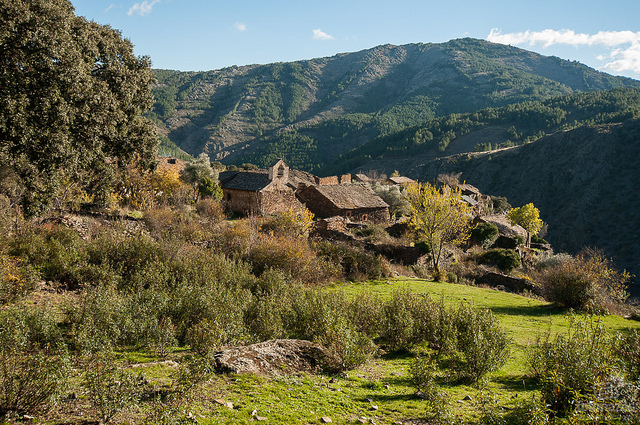
The village La Vereda (Guadalajara)
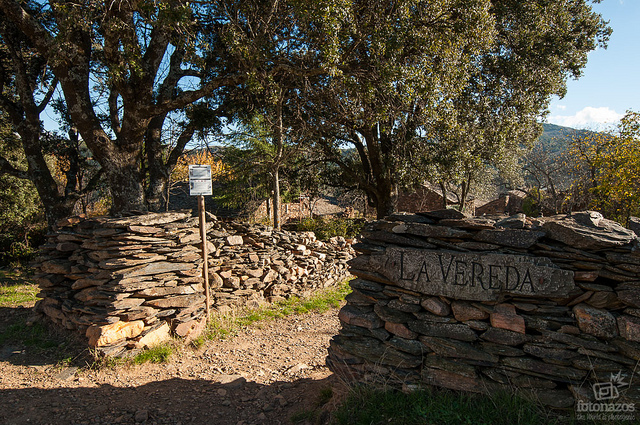
A little wall with the name "LA VEREDA"
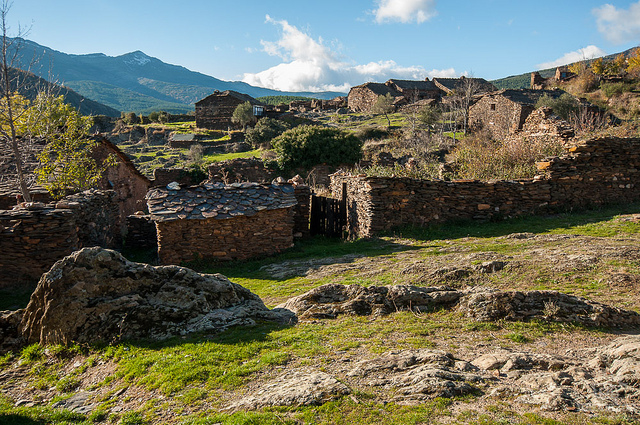
Other houses of La Vereda
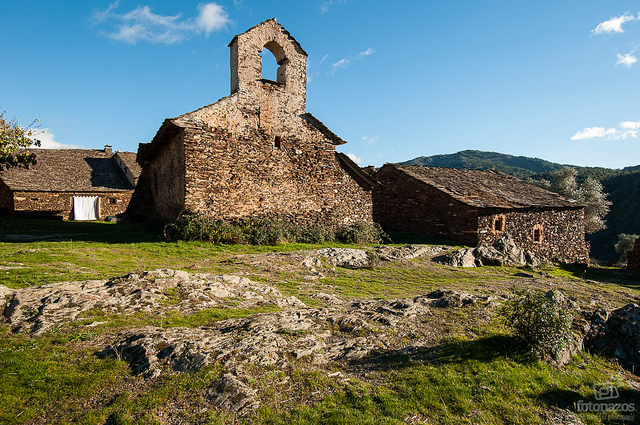
The church
The best way to arrive there is to go to the reservoir of El Vado, from Campillo de Ranas or from Retiendas, by the Gu-188; then you arrive to the spillway and dam of the reservoir; from there, after the dam, leaves an unpaved forest path, that enters the thicket of the pine forest and leads you to the village of La Vereda, 10 kilometres of road, that, if it has rained, it is advisable not to enter it with a normal private car, because there are a series of holes and potholes in the road, that they do it, a bit rough, but not impossible to travel; the road is not lost, it is all straight and after a series of winding curves, you reach a stop in front of a cut, where you can see the first houses of the village; on the same road, there is a siding, where to leave the cars and, right there, on a black slate wall, you can find, on a board, the name that indicates that you have arrived at the village, an entrance that, without a doubt, it invites you to pass and stroll, through the irregular alleys.
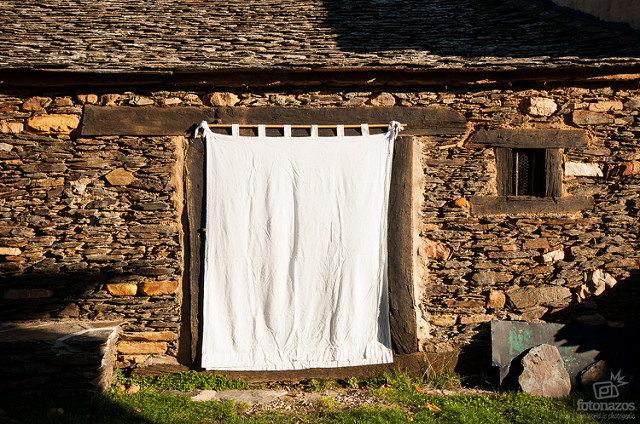
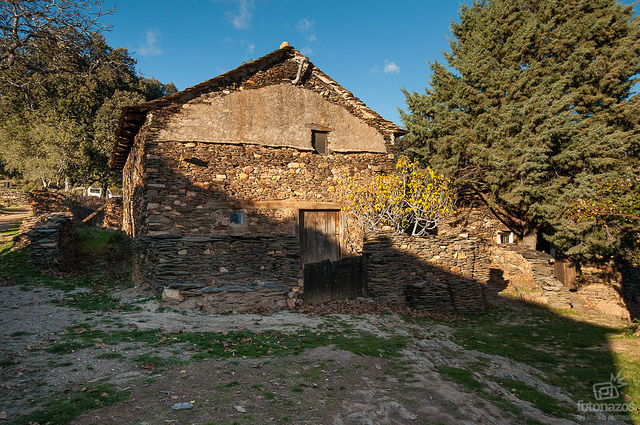
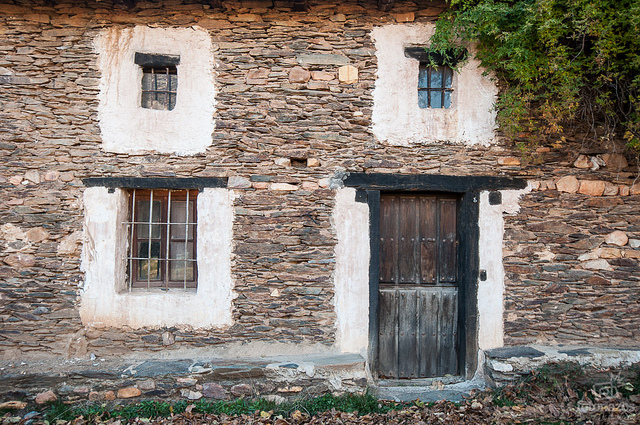
The village of La Vereda is located in a remote area of Guadalajara, sheer lands, with difficult access and little infrastructure of roads, without basic services such as tap water, electricity and doctors, the village was losing population by the massive emigration of Its inhabitants to big cities; that and the construction of the reservoir of El Vado, that completely drowned the village, from which receives its name, left the village of The Vereda even more isolated; the missing ICONA wanted to throw the houses, abandoned by the neighbors, and to reforest that part of hill, but, in 1976, a group of architects, from Guadalajara and Madrid, avoided the collapse and decided to create a cultural Association around the village, to maintain its architectural legacy, that today is one of the jewels of the black architecture of Guadalajara and, since then, they have been rehabilitated the best preserved buildings and, despite the lack of electricity and tap water, it has been endowed with life to the village, thanks to the work of this Association, that today is called “Asociación Cultural La Vereda”.
One of the buildings, that is most striking, is the small square church and with a steeple, where it is observed the absence of the bell, a small porch supported by wooden columns; there, on the porch, there were traces of rice, so you can think that weddings were still being officiated and it is sincerely a very original place to get married.
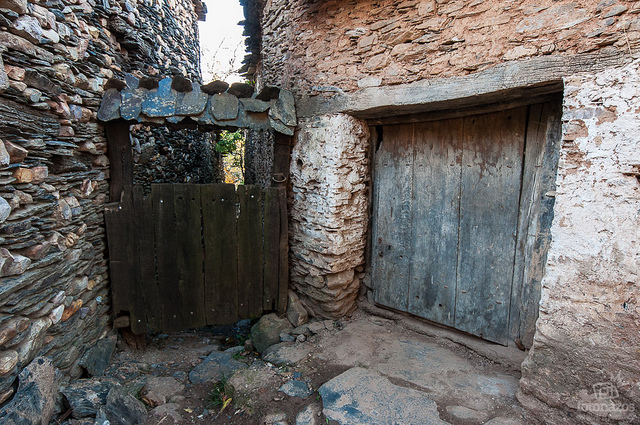
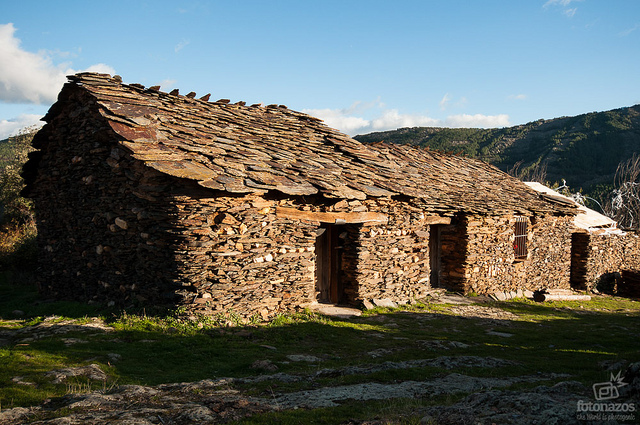
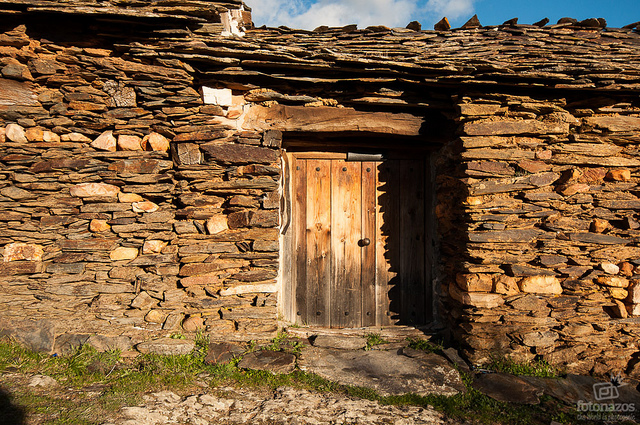
If you enter through the irregular alleys of the village, you will discover how many houses had been rehabilitated, some were in process with scaffolding and others had succumbed to abandonment and decay, but the old small walls and plots, where they were, were intact and it was a very contrast Interesting; the area of the Sierra del Ayllón is very rich in black slate, as you can see on the bridge of the river Jaramilla; here, in La Vereda, the old settlers knew to use for their constructions, what they had at hand and, nowadays, we have a wonderful legacy. Along with Majaelrayo and Matallana, La Vereda is a clear example of what was the traditional construction, in black architecture of Guadalajara; neighbors, who today are rebuilding the village, maintain this custom and, as you see in the photographs, rebuilt houses are not getting any bad.
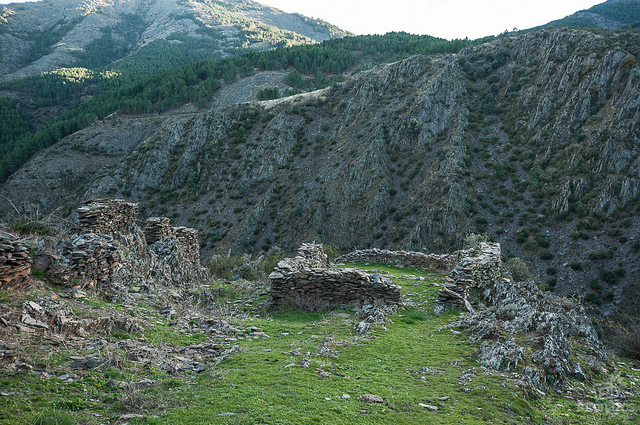
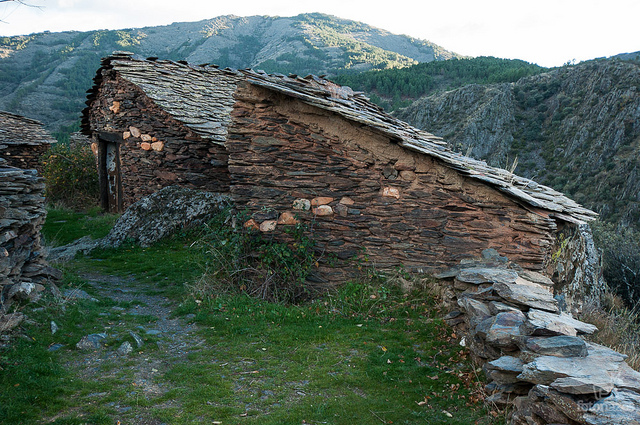
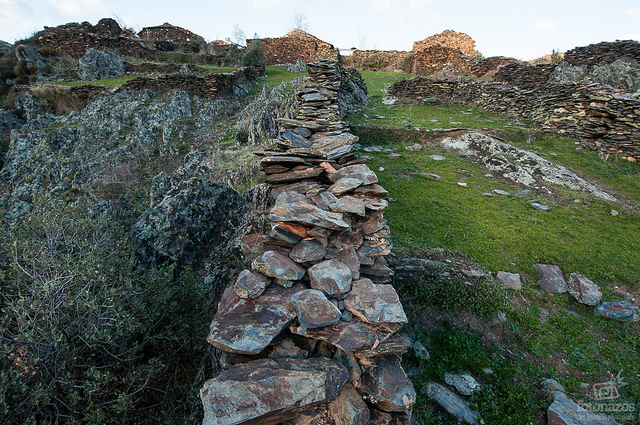
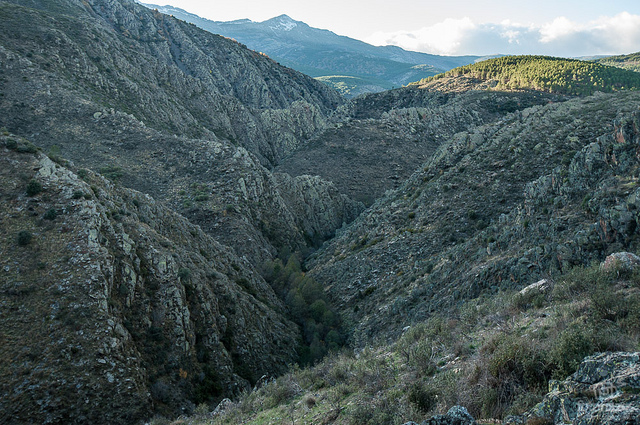
As I told you, the village of La Vereda is on a cut that forms the stream Vallosera; it is impressive, to see the remains of houses, that were on the edge of the cliff, in this area of the village, being the most isolated and I think dangerous, by the proximity of the ravine; it is where you can find most abandoned houses; undoubtedly, that area is the best for the observation of birds, that inhabit that cut, vultures and small eagles inhabit the nooks and crannies of the cut.
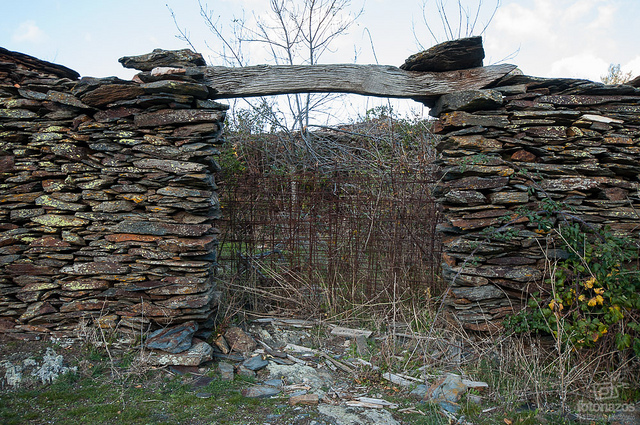
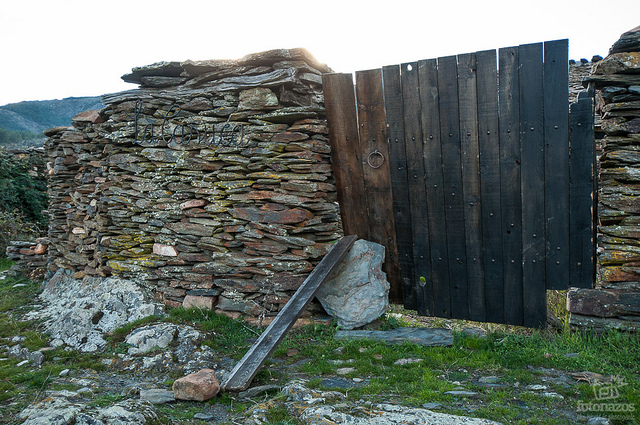
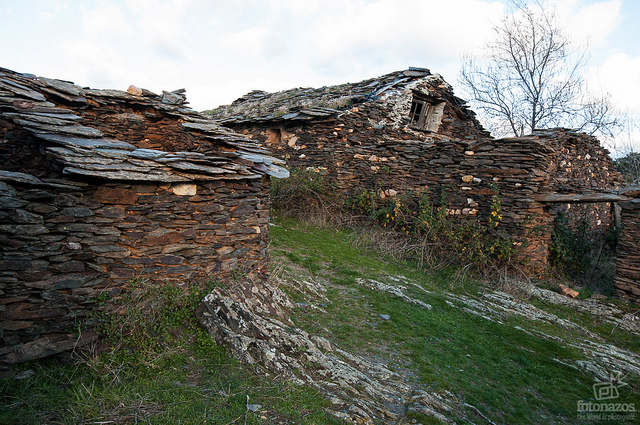
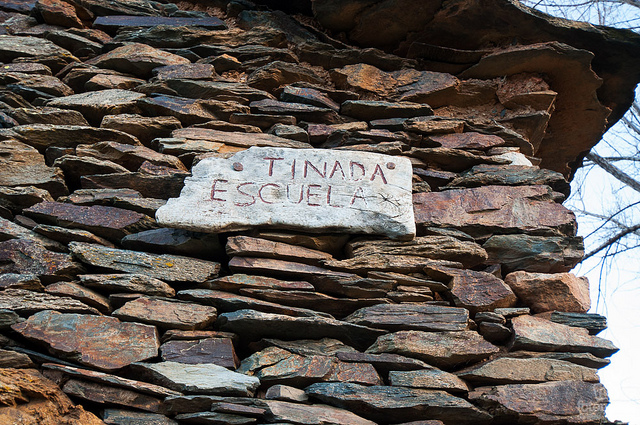
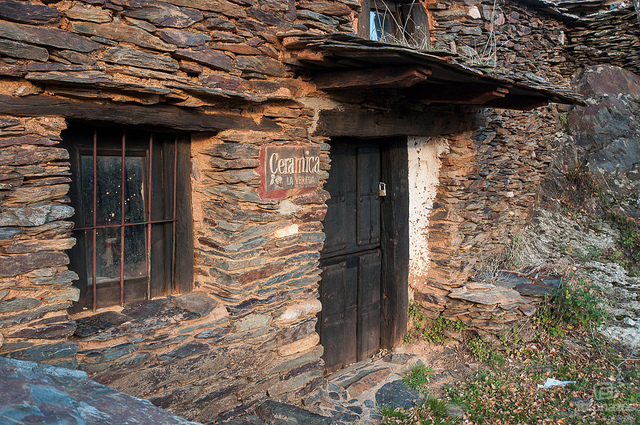
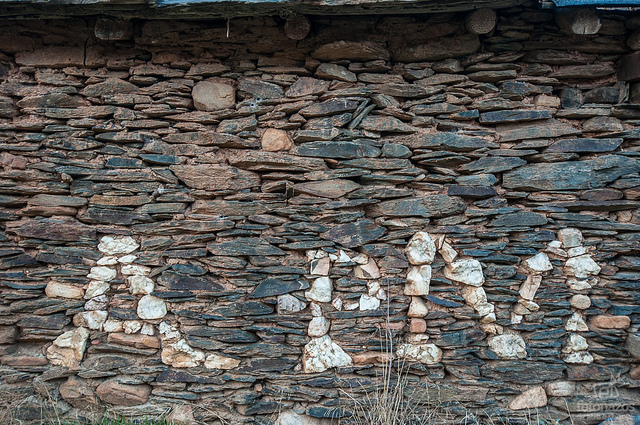
If you go there, you will can walk the streets of La Vereda, observing some small details like planks indicating the name of the old streets, you will can also see how some houses had been rehabilitated as workshops, workshop of ceramics, of restoration and forge; it is curious to see how some lintels of wood follow standing, while the house does not exist or doors, that after opening, they give access to a plot, surrounded by small walls of slate.
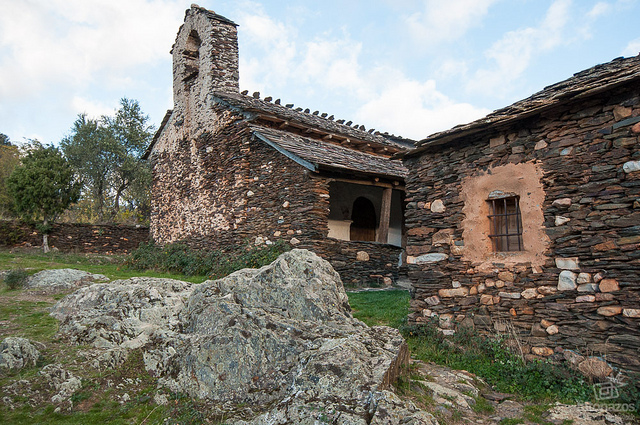
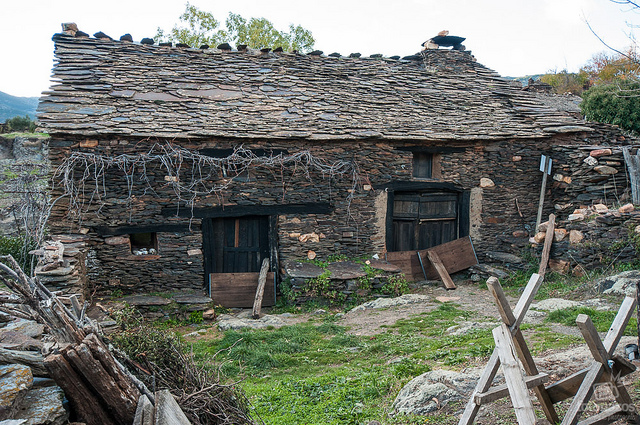
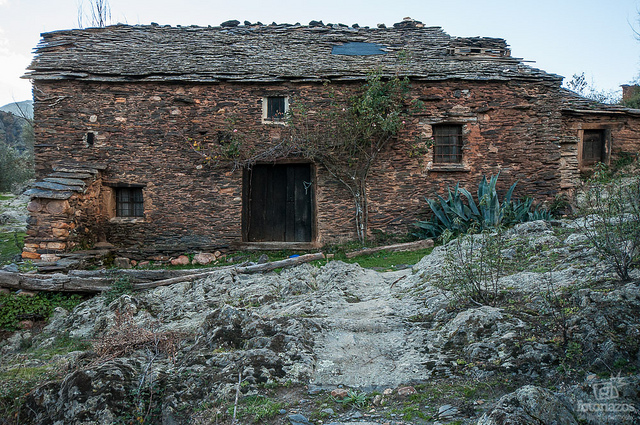
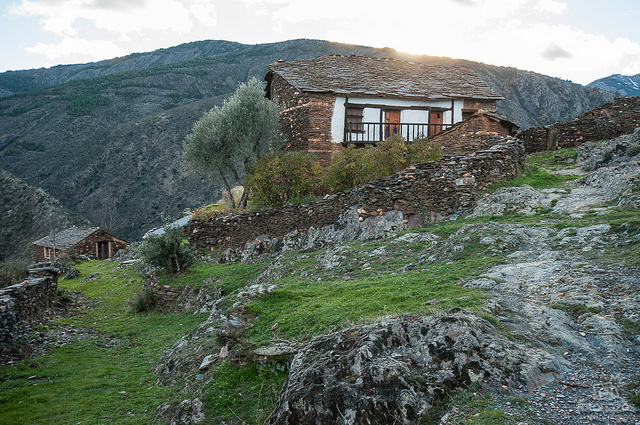
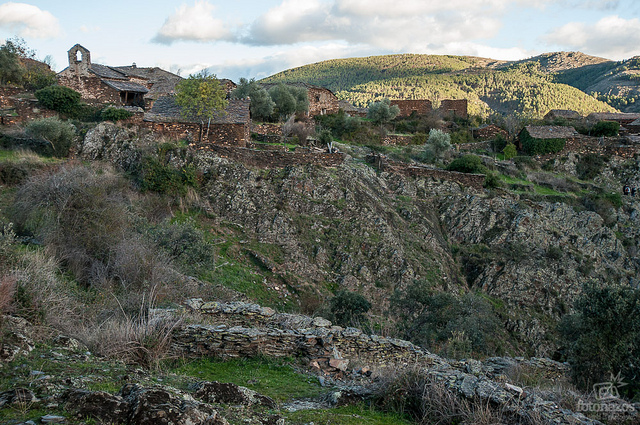
La Vereda, Isolated, with little coverage, no tap water, no light, is the perfect place for those who want to escape the stress of the city, a semi-abandoned village, in a hidden place of the province of Guadalajara, a village that, thanks to the effort of a few who defended the architectural and traditional legacy of the area, today it has become a benchmark, in terms of preservation and defense of traditional culture, no doubt, in my opinion, the Association is doing very well, recovering one of the greatest jewels of black architecture, for the enjoyment of the adventurous, in walking the forest track from El Vado.
I feel very happy knowing this small village –although it is only through these pictures--, I think I am going to search a lot of abandoned villages, to share them with you. This village could be a lot of slates in ruins, however it is a village full of live, surrounded by a wonderful nature, a clean and authentic place.I suppose that the most that you can hear is the chirping of the birds and the wind blowing between the slate cut; therefore, it is a visit that I recommend you.
Well, I hope that you can visit this small village and, if you do it, please tell me it.
Until my next post, kind regards,
Luis.
Sponsored by Caostaluz Lawyers.
Please click below:

 0
Like
Published at 9:41 AM Comments (0)
0
Like
Published at 9:41 AM Comments (0)
A Spanish study on carer sick of Alzheimer's patients
Tuesday, May 23, 2017
I have just found an important news for Alzheimer's caresick: "94% of Alzheimer's patients are cared for by relatives". This news seems important to me, because it is only fair that we all must keep the great work in mind, that these caregivers do, who are normally family members and have scarce economic resources.

94% of Alzheimer's patients are cared for, at home, by family caregivers, whose personal, social and economic situation is relegated to the background, and the Spanish Alzheimer's Confederation (CEAFA) has presented a study, with 78 proposals, for Improve the quality of life of these caregivers.
With the title “Consequences of Alzheimer's disease in the family caregiver”, the President of CEAFA, Cheles Cantabrana, has delivered this study to the General Director of the Institute of Older and Social Services (IMSERSO), Carmen Balfagón, who has stressed that "No one misses the drama of Alzheimer's disease, not only for the patient who suffers it, but also for the people around him".

Cheles Cantabrana

Carmen Balfagón
"We must support and reinforce these family caregivers because they are irreplaceable and, therefore, will form part of that National Alzheimer's Plan, which will be completed this year, as an indispensable part in addressing this pathology, in our society", she added.
The objective of the CEAFA study was to know the personal, social, economic and labor situation of the caregiver, to articulate the necessary proposals, that allow him to reconcile his dimension, as a caregiver, and his personal life.
In this regard, its President afirms that "this is the first time that a study speaks about the person behind a caregiver. Therefore, we present 78 proposals that are framed in three main axes: the first, focused on making the person over the caregiver; secondly, proposals aimed at public administrations, to optimize public systems of public health protection; and third, proposals aimed at compromising society”.
Alzheimer's is a neurodegenerative disease, that generates a great dependence. In most cases, the family cares for these patients and, in 76% of cases, the caregivers are women, over 50 years of age. According to CEAFA, the average cost of caring for a person with alzhéimer is around 31,000 euros per year. At this moment it is estimated that there are 1,200,000 patients of Alzheimer's, in Spain.
This study also had the collaboration of CINFA, whose President, Enrique Ordieres, stresses that "Alzheimer's is not only a disease, it is a social problem that affects us all. This study focuses on these caregivers, who are the great forgotten of this disease".
I am glad that this study exists, to give a little protagonism to the caregivers, who deserve a lot of respect, for the great work they do every day.
Well, I hope that you have liked this article too.
Until my next post, kind regards,
Luis.
Sponsored by Costaluz Lawyers.
Please click below:

 0
Like
Published at 11:20 AM Comments (0)
0
Like
Published at 11:20 AM Comments (0)
A great fish dish in the South of Spain
Thursday, May 18, 2017
Today I would like to recommend you a very good and famous fish dish, in the South of Spain: "The Urta a la Roteña" --called "a la Roteña", because it arose in Rota, province of Cadiz, Costa de la Luz. I can tell you that I lived, in Rota, when I was 10 years old, I tried this dish and remember I liked very much----.
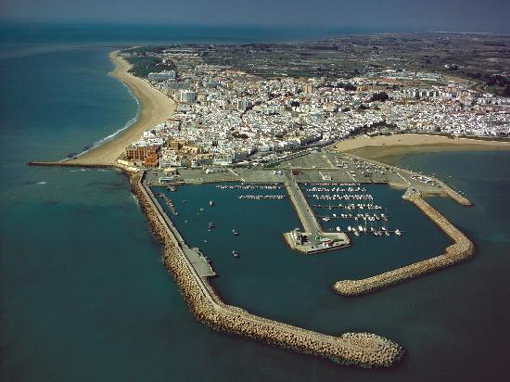
Aerial view of Rota
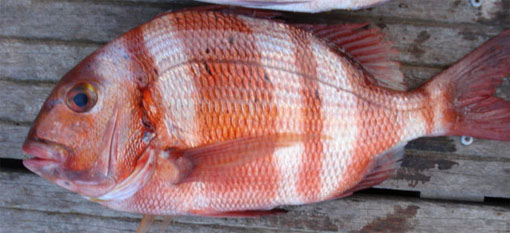
An Urta
It should be better if you came and tried it, in the village of Rota; but, as long as you can not come, I have thought that you might want to try cooking its recipe.
These are the Ingredients (for 4 persons): 1 urta (2 kg). 1 large mature tomato.2 green peppers.1 onion.1 or 2 garlic cloves.2 wine glasses.2 large potatoes thinly sliced. Salt, parsley, lemon.
Method: In a greased baking dish with oil, place the potato slices. Sprinkle with a wire of oil, put a pair of bay leaves and take to the oven to 190º, so that the potatoes begin to soften. We leave them during 10 or 15 min, covered with foil, so that we do not get too brown.
Meanwhile, we prepare the fish well clean, and we make light slices on the fillet, if it is very large. Cover with a little squirt of water, oil, lemon and salt. We take it to the oven and we start the cooking (12-15 minutes) to 190º.
In this time, we prepare a sauté, with the vegetables chopped big, we add the wine, we give a boil and we cover the fish, with all this, half done in the oven, leaving approximately another 10-15 minutes. If the fish is filleted, cooking will be less.
And this must be the result, before serve it:
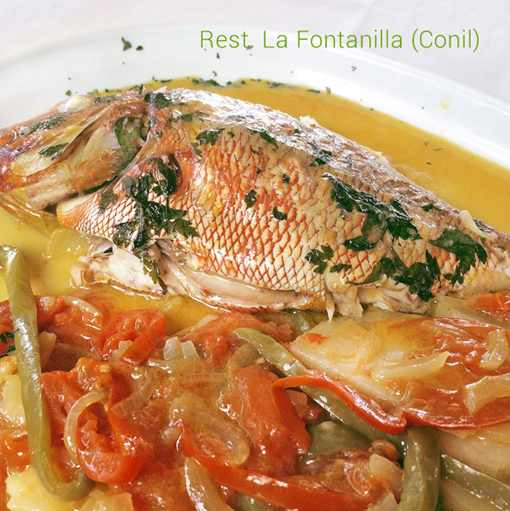
The whole "Urta a la Roteña" cooked in the oven
We serve the fish to the point, with the garnish of potatoes and vegetables from the oven.
Well, I hope that you can come to eat this wonderful dish, in the restaurant “La Fontanilla”, in Conil (Cadiz, South western Spain). In case you can not come, perhaps you want to try to cook it as I hald told you. If you do it, please tell me it.
Until my next post, kind regards,
Luis.
Sponsored by Costaluz Lawyers.
Please click below:

 1
Like
Published at 12:35 PM Comments (0)
1
Like
Published at 12:35 PM Comments (0)
Spanish researchers discover that black garlic protects heart
Tuesday, May 16, 2017
I know that white garlic is very good for bronchi --I know it because my wife takes it, when she has trouble breathing: she swallows a little piece of garlic, without chewing it, and that greatly improves her bronchi--; but what I did not know is that black garlic is good for heart.
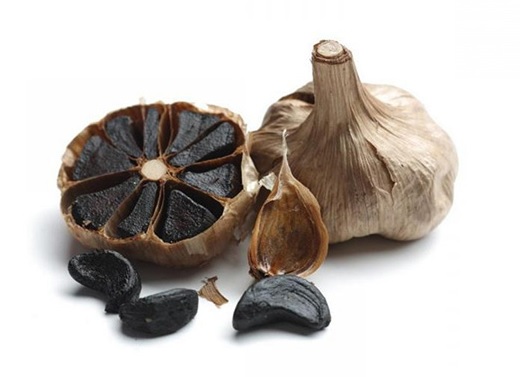
Aged black garlic
Researchers at the Autonomous University of Madrid (UAM), in collaboration with Pharmactive Biotech, have found that aged black garlic can attenuate the decrease in cardiac contractility, after a myocardial infarction, in rats.
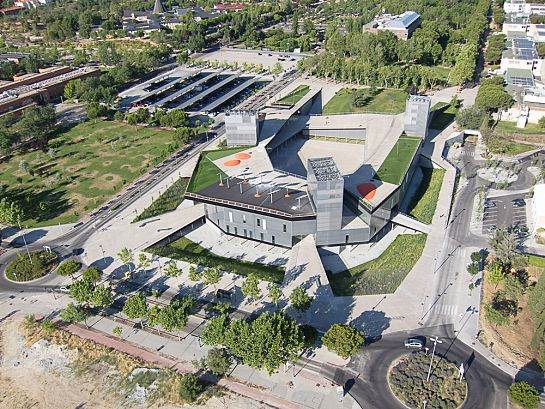
Autonomus University of Madrid
It is a type of garlic, widely used as a condiment in Asian cuisine, whose use has been extended, in recent years, by North America and Europe. It is obtained from the common garlic, by means of an accelerated aging process, controlling temperature and humidity parameters.
Unlike conventional garlic, the resulting product contains a higher content of polyphenols, polyunsaturated fatty acids, such as linolenic acid, and sulfur compounds, especially S-allyl cysteine SAC, which gives it a higher antioxidant capacity.
In this sense, the researchers, whose work has been published in the “Journal of Functional Foods”, have analysed the 'in vitro' effects of a black garlic extract, on cardiac function in rats, after myocardial infarction. The experiments were performed using the perfused heart technique (Langendorff), which allows the evaluation of exlive cardiac function and administer treatments directly to the heart.
In this way, they verified that the extract of black garlic has a potent vasodilator effect of the coronary arteries, and that the administration of this extract, before and after an ischemic process (stroke), prevents the reduction of cardiac contractility induced by it.
"The effect, on cardiac contractility, turned out to be a dose-dependent dose, which is produced exclusively by the administration of a dose of 50 mg / L of extract, and not with a dose greater than 500 mg / l", said the doctor of the Department of Physiology of the UAM and director of the investigation, Miriam Granado.

Dr. Miriam Granado
Also, the scientists administered the black garlic extract to segments of the aorta in an organ bath system to assess vascular reactivity. Thus, they observed that the extract of black garlic induced vasodilation, at high doses, and increased the release of nitric oxide (NO) at both the dose of 50mg / L and that of 500mg / L.
These functional studies in heart and aorta were complemented, by the analysis of the expression of inflammatory markers and oxidative stress, in arterial and cardiac tissue. "Contrary to expectations, the administration of the black garlic extract not only did not decrease the expression of these markers, but increased it slightly, in some cases, but the extract also increased the expression of some anti-inflammatory markers and antioxidants", Granado has apostilled.
Now then, she continues, these results can be explained by hormesis, a phenomenon that mediates the pharmacological effects of some medicinal substances and is defined as the process by which exposure to low doses of a particular chemical or environmental, agent harmful to high doses , induces an adaptive response and a beneficial effect, on the cell or organism.
"It is therefore possible that inducing a mild inflammatory and oxidative state causes the black garlic extract to simultaneously activate anti-inflammatory and antioxidant mechanisms that prevent, at least in part, alterations caused by major damage, such as a myocardium heart attack", she has resolved.
Well, I hope that you have liked this post.
Until my next post, kind regards,
Luis.
Sponsored by Costaluz Lawyers.
Please click below:

 1
Like
Published at 11:46 AM Comments (0)
1
Like
Published at 11:46 AM Comments (0)
Spanish scientists launch therapy with birds of prey for treatment of rare diseases
Thursday, May 11, 2017
Effectively, the recently launched raptor therapy for the treatment of children and adults, with cognitive difficulties and rare diseases, shows the first results of a pioneering project, in Spain, led by professional falconers, therapists and psychologists.
The program, successfully launched, in a hospital in Castilla-La Mancha, is led by Jesús Gómez, master falconer and breeder of raptors, for more than 30 years, who, helped by a team of psychologists, has become what they are Known as therapeutic bird.

Jesus Gomez
The therapeutic use of animals dates back to the end of the 19th century, when England used this practice, nokwn as zootherapy, to treat people with intellectual disabilities; almost a century later, Germany experimented with patients with epilepsy. At the moment, the zooterapy is recognized by the science and there are numerous projects involving dolphins, horses or dogs, for the treatment or improvement of certain cognitive disorders, such as autism or asperger, and to improve the quality of life, motivation , Self-esteem and learning in children and adults.
"Raptors are equal or more effective than dogs, horses or dolphins, for these jobs", Jesús Gómez told to Efe, and, in fact, "US marines have been using them, for 30 years, for the psychological treatment of their fighter pilots".

American Bald Eagle
For Jesus, this is "the most exciting project" of his life, even though throughout his long career, he has worked with renowned falconers, such as Aurelio Perez, a collaborator of Félix Rodríguez de La Fuente, or has participated in many programs Television, lectures, courses and exhibitions.
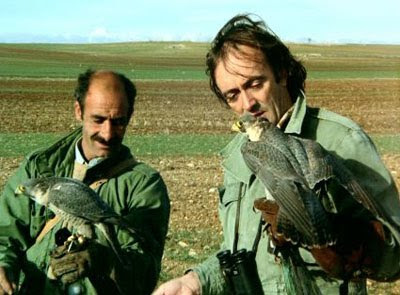
From left to right: Aurelio Perz and Felix Rodriguez de la Fuente
With his company (Eagles and Falconry) and the help of his tireless therapists (his raptors), he works with people "with functional diversity and rare diseases, through contact with birds", which serve as motivating agents and enhancers of affectivity.
In Spain, "we collaborate with the Sonrisas association, which brings together the social action of all the State Security Corps and Forces to help people improve self-esteem, safety and fight phobias". "These families receive what normal medicine can not do", explained Jesus, who says excitedly that "what I live and what I see from this side, the evolution of the kids, is impressive".
Falconer "For the grace of God", as he defines himself, Jesus Gomez is also the only one, in Spain, who trains birds of prey for the hunting of "hostile drones", those, which attack the security or privacy of people, as he explained.

An eagle in front of a drone
Since a little more than a year, in the locality of Chapinería (that belongs to Madrid), he has six great eagles, real and American baldness, ideal to capture drones in flight "as a more security measure", a technique already used by the police, in States United States and in European countries such as Holland. "It is about knocking down hostile drones, that paparazzi use to photograph or record celebrities, in their own homes, or threaten the security of a state", Jesus explained.
The training begins with young birds "that have not done this work before and have no other type of hunting in their head", he pointed out, it is "like the dog looking for drugs or explosives, a reflex conditioned by a prize, that it receives at the end of its work".
The regulation on the particular use of drones "is hard, but for those who want to do evil, legislation does not work", said Jesus, who has already received requests from "Marbella people very worried, because they have a permanent watch problem".
Esteban Martín, delegate of the Spanish Association of Falconry and Conservation of Raptor (AECCA), in Madrid, explained to Efe that the use of birds of prey to shoot down this type of equipment "will have much expansion in the future and many applications, both military as civilians".
"We see it with good eyes, we support one hundred percent this activity", said Martin, who has pointed out that the AECA, which counts in Spain with a thousand members, is the third in the world, although by density of falconers, it Is the greatest".
Well, I hope that you have liked this article.
Until my next post, kind regards,
Luis.
Sponsored by Costaluz Lawyers.
Please click below:

 1
Like
Published at 9:08 AM Comments (0)
1
Like
Published at 9:08 AM Comments (0)
Another spanish saying and proverb 71
Friday, May 5, 2017
Today I would like to show you a very popular saying in Spain, that says: Ande yo caliente y riase la gente = While I take cover, people can laugh.
This saying comes from a poem by Góngora (Luis de Góngora y Argote was a Spanish poet and playwright of the Golden Age --Sixteenth century--), which reads as follows:
While I take cover,
people can laugh.
Others treat of the government
of the world and its monarchies,
while ruling my days 5
butters and sweet bread;
and winter mornings
orange juice and brandy,
and people laugh.
But this saying does not refer literally to the fact of going warm, but rather going against the conventions of society. For example, one day, Lady Gaga was in the street dressed in a bizarre way; but she does not mind doing that, she does not care if someone laughs.

Lady Gaga
Well, I hope that you have liked this saying.
Until my next post, kind regards,
Luis.
Sponsored by Costaluz Lawyers.
Please click below:

 1
Like
Published at 11:26 AM Comments (2)
1
Like
Published at 11:26 AM Comments (2)
Spanish researchers discover that the waxworm eats plastic
Wednesday, May 3, 2017
Yesterday I found a curious and so interesting news: "The waxworm is capable of biodegrading resistant plastics".
Waxworms are the great enemy of hives: they destroy their honeycombs and eat honey, but their voracity might be useful, since these insects are capable of degrading plastics as resistant as polyethylene, used mainly to make bags and tins.
The research, conducted by Federica Bertocchini, a researcher at the Higher Council for Scientific Research (CSIC), along with scientists at the University of Cambridge, has been published the last Monday, in the journal Current Biology.
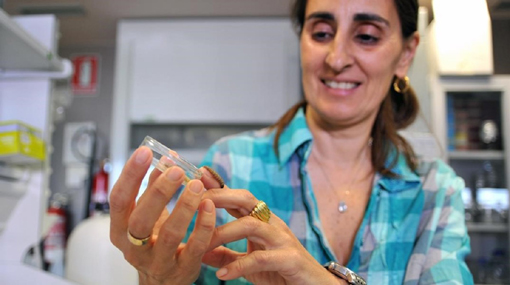
Federica Bertocchini
Plastic waste is a serious global problem. Every year more than 80 million tons of polyethylene are produced worldwide, a very resistant plastic and difficult to degrade. Shopping bags, for example made of low-density polyethylene, take about 100 years to decompose, while the denser and more resistant ones can take up to 400 years to disappear.

Shopping bags
On average, each person uses more than 230 plastic bags annually, which generates more than 100,000 tons of waste. At present, these types of plastics are burned or degraded with chemical processes, that, in addition to being long, are aggressive with the environment, since for their chemical degradation, corrosive liquids like nitric acid are used.

Tons of bags waste
"Plastic is a global problem. Some of them, such as plastic bottles, are partly recycled but most end up in landfills and in the oceans, forming immense islands like the Pacific, that are not destroyed", explained, to Efe, Bertocchini, Researcher at the CSIC Institute of Biomedicine and Biotechnology of Cantabria.
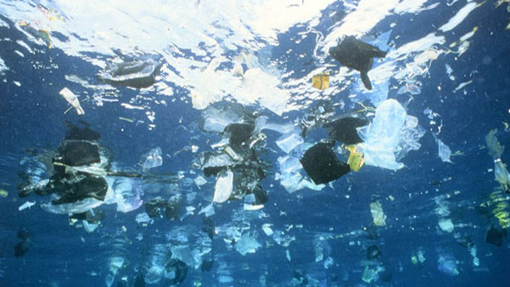
Bags under sea
The waxworm, the larva of the common insect Galleria mellonella or major wax moth,is a scourge of hives, throughout Europe. In nature, worms live, as parasites, in bee colonies. Moths lay their eggs inside hives and worms grow on beeswax (hence the name). But they could be the natural solution to a serious environmental problem. And the author of the discovery found this ability of wax worms almost by accident.
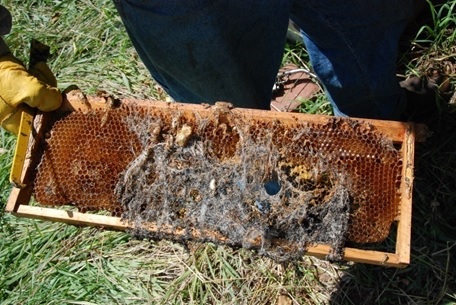
WaxMoth
"I am an amateur beekeeper and one day, cleaning the hives, I discovered the worms, I put them in a plastic bag and, twenty minutes later, it was full of holes, and I knew that those insects were very special", she claimed.
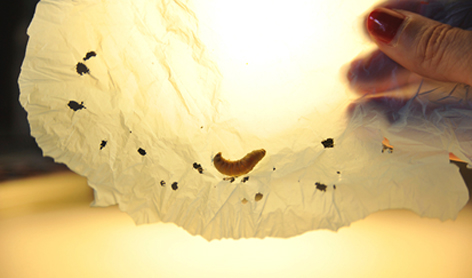
Waxworms eating plastic
With the help of Paolo Bombelli and Chris Howe, the researcher made a lot of checks because "it was essential to check that the worms were not limited to eating the bag, but it had degraded it with a chemical process and at high speed. It was something really impressive”.
“In fact, in experiments 100 waxworms are able to biodegrade 92 milligrams of polyethylene, in 12 hours, it is actually very fast".
The finding, which has already been patented by the researchers, is important because it will allow study the molecular mechanism, used by the worm to destroy the plastic. After all, "wax is a polymer, a kind of 'natural plastic', and has a chemical structure not unlike polyethylene", says Bertocchini.
The researchers still do not know how biodegradation occurs, which could be due to a bacterium, that lives in symbiosis in the worm's gut or an enzyme, a molecule generated by the insect. If so, "the objective would be to isolate the molecule and try to reproduce it, in the laboratory, to manufacture it on an industrial scale", says the researcher.
If researchers were able to isolate and produce this molecule, it could be used to biodegrade millions of tonnes of plastic, in landfills, and prevent them from accumulating in the environment. "We could begin to effectively eliminate this tough material", says Bertocchini.
However, for the researcher, "the most beautiful thing is that we found this finding in nature. For us, it is shocking that nature itself can give us the solution to the serious environmental problem of plastics".
I hope that you have liked this curious news.
Until my next post, kind regards,
Luis.
Sponsored by Costaluz Lawyers.
Please click below:

 1
Like
Published at 9:44 AM Comments (1)
1
Like
Published at 9:44 AM Comments (1)
Spam post or Abuse? Please let us know
|
|